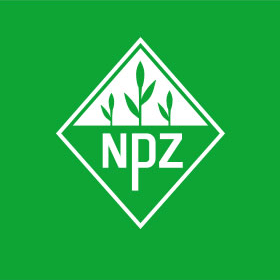Legumes - good for soil and climate
At the end of April, our International Product Manager Legumes, Nils Christiansen, was invited to the Christian-Albrechts-Universität (CAU) Kiel to report on field beans, grain peas and the like as part of a Milch-AG information evening.

Nils Christiansen during his lecture on legumes.
After a general introduction to the current European cultivation volumes and the market situation of the above-mentioned pulses, he reported on the increasing interest in winter forms, which can be the more sensible alternative in some locations - a trend that has been observed for years in hot and dry central France, for example, and is becoming increasingly popular in Germany and Eastern Europe. The advantages are that the crop is already established in the wet spring or that flowering and yield formation take place before a pre-summer drought. In addition, Nils advocated a diversification of puses in terms of variety, but also in terms of cultivation. In the future, for example, grain peas could also gain more area in the "field bean country" of Schleswig-Holstein, as the crop is better able to compensate for dry periods than a field bean. In addition, grain peas are better suited to light soils. Multi-year yield comparisons by Norddeutsche Pflanzenzucht (NPZ) show that grain peas have a yield advantage after dry springs.
I'm not interested in the bean, am I?
The reputation of field beans and grain peas is not always the best due to prejudices such as fluctuating yields or a lack of sales channels. Nevertheless, Nils Christiansen was encouraging: "Legumes are a real boon for the field." He cited the lower fertilizer and pesticide requirements, the very high preceding crop value and the benefits of legumes for soil life and crop rotation. He also gave an insight into the wide range of possible uses of the crops, which range from sale to the trade or food processing to the farm's own utilization.
Successful breeding
As a representative of a renowned plant breeder, he also explained to the students the importance of breeding for the ever-increasing acceptance of legumes by farmers and consumers. Thanks to successful breeding work, current grain pea varieties are more stable and higher yielding than in the past. Demand for field bean varieties has also increased, as breeding has made it possible to reduce antinutritive substances (such as Vicin/Convicin), increase protein content and improve resistance to a range of diseases.
Soy on the rise
Nils Christiansen also spoke about the progress made in soybean breeding at the NPZ: "We have understood that farms want to diversify further." Promising soybean candidates with early maturity are already undergoing official testing, which will also be suitable for light locations in northern Germany. So here too, climate change and breeding are paving the way for new crops.
Growing importance in the future
The conclusion was accordingly: climate change and its consequences require adaptations not only from us humans, but also from plants. Thanks to the work of plant breeders, there will also be promising plant varieties in the field in the future.
Legumes will play a key role in promoting sustainable and efficient agricultural practices while ensuring food security.
More information from Nils Christiansen:
Mobile: 0049/ 160 / 93 60 02 47
E-Mail: n.christiansen@npz.de

